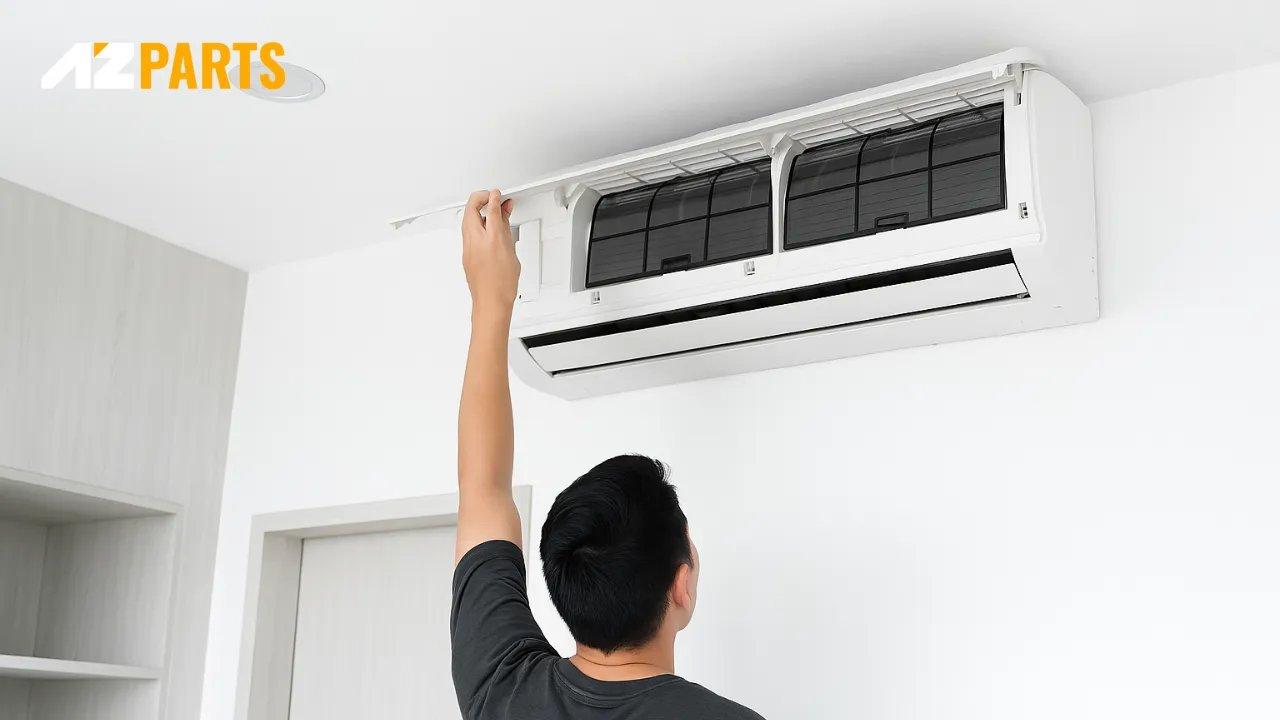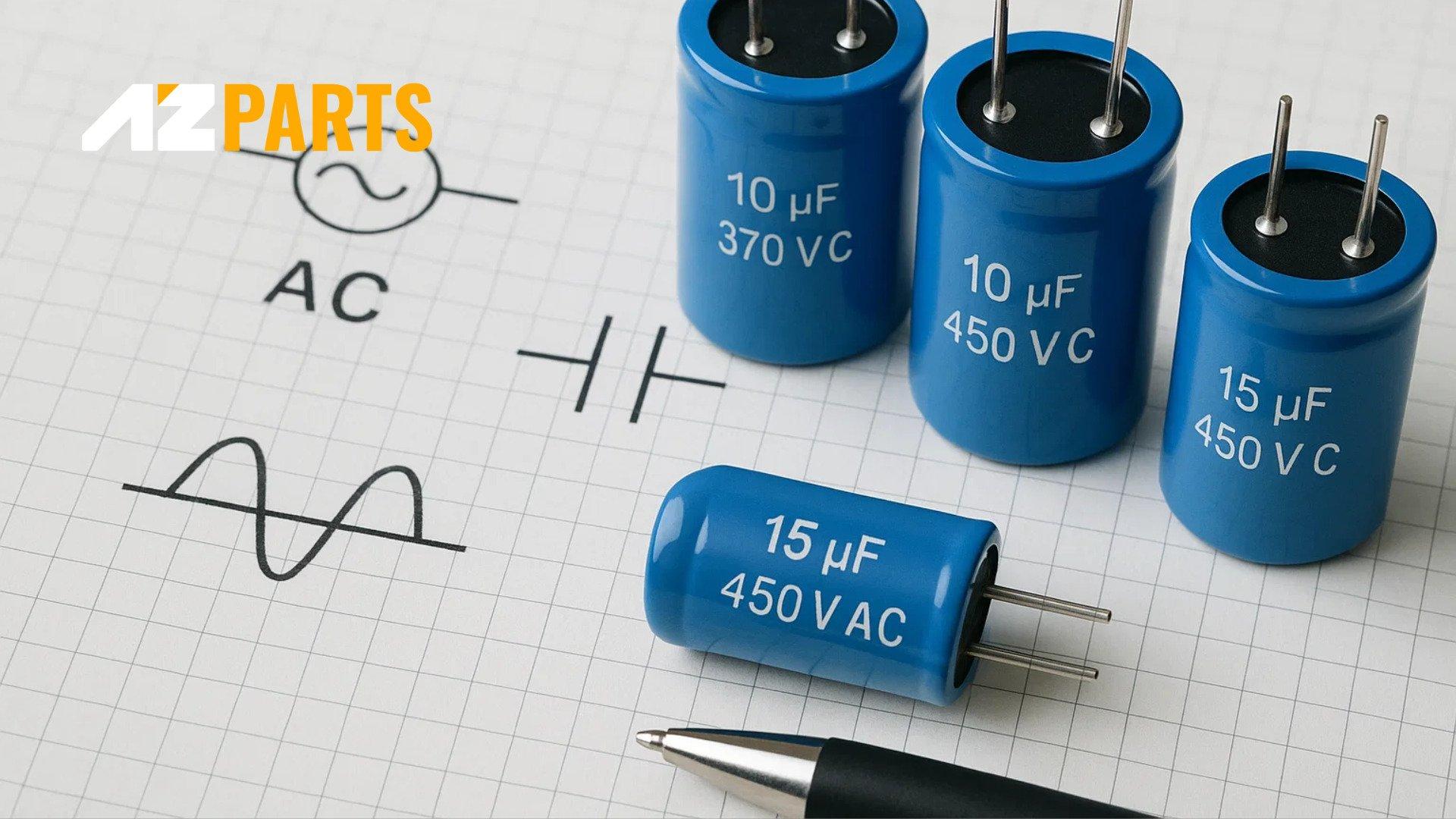How-To Guides
How to Winterize Air Conditioner and Prepare it for Winter
AZparts Team
Updated on July 24, 2025
5 min read
As the temperature drops, preparing your home for winter becomes a priority, which includes taking proper care of your air conditioner. Failing to winterize your air conditioner can lead to rust, wear, and costly damage, especially to your outdoor unit. In this guide, AZParts will walk you through 6 simple steps to winterize your air conditioner, followed by one professional recommendation that can greatly extend your unit’s performance and durability.

1. 6 Simple Tips for Winterizing Your Air Conditioner
By taking just a few simple steps now, you can avoid expensive repairs later and ensure your air conditioner stays in top shape for years to come.
1.1. Power Off
Shutting off power to your air conditioner prevents accidental activation during the winter months. Even a brief, unintentional startup during a mild winter day could cause the unit to pull in ice or snow, damaging the fan blades or compressor. It’s also a critical safety step before any cleaning or maintenance.
How to do it:
Locate your home's electrical panel and find the circuit breaker labeled for the air conditioner or condenser. Flip the breaker to the OFF position. Some units have a nearby outdoor disconnect box; if yours does, open it and switch the handle to OFF or REMOVE the fuse block. Tag it with a note to remind yourself not to turn it back on until spring.
1.2. Clean the Outdoor Unit
The outdoor condenser unit is exposed to the elements and can accumulate a mixture of dirt, dead leaves, twigs, and grass clippings throughout the warmer seasons. If left uncleaned, this organic matter can trap moisture, leading to rust, mold, and rodent infestations that damage internal electrical components.
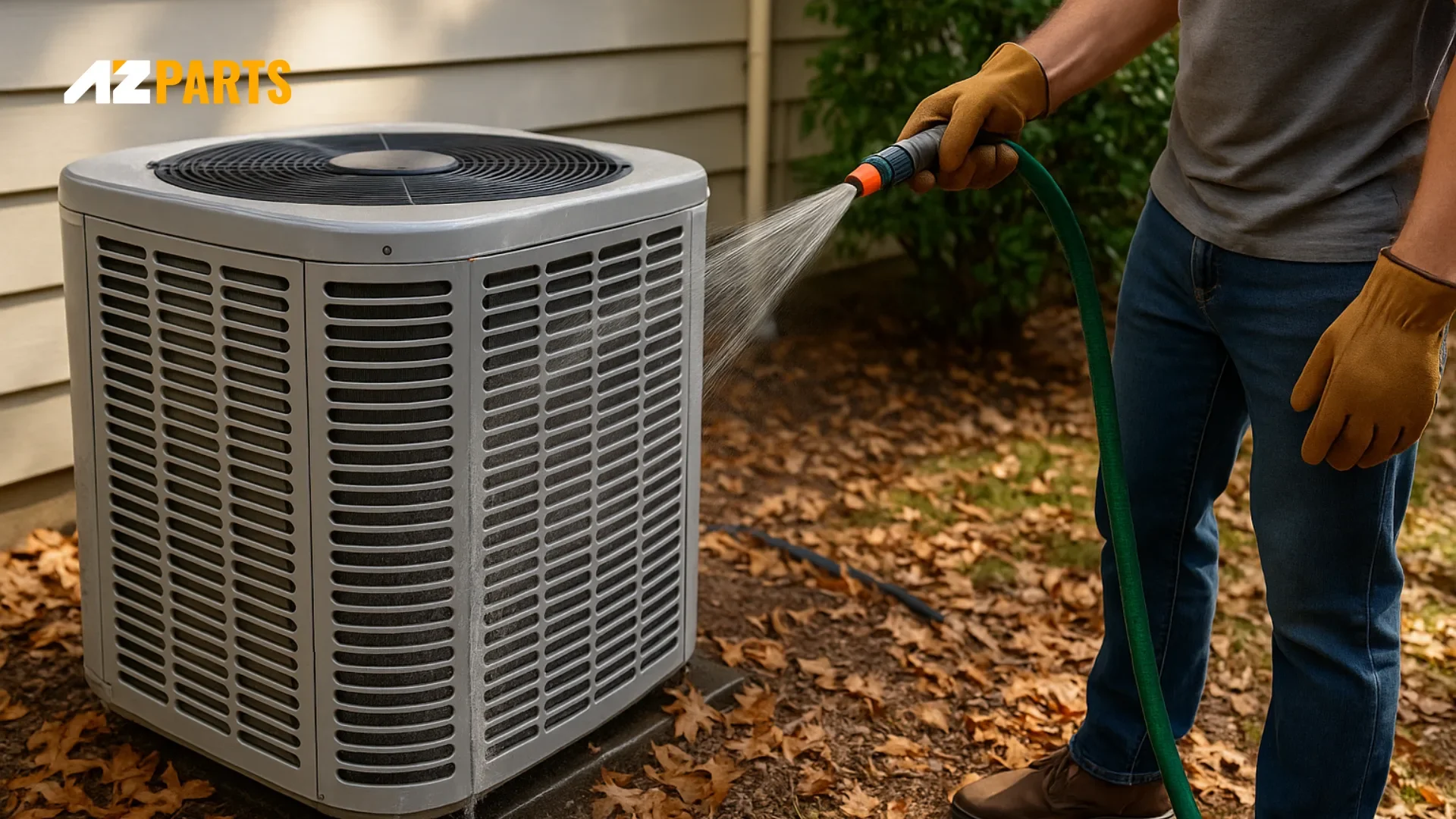
Clean dirt, leaves, and debris from the outdoor unit (Source: AZParts)
How to do it:
Start by using gloved hands to remove larger debris from around the base and inside the fan grille. Use a garden hose on a low-pressure setting to rinse away dust and pollen from the coils and fins. For stubborn buildup, use a coil cleaner spray (available at hardware stores) and a soft-bristled brush. Be sure the unit is fully dry before continuing with insulation or covering.
1.3. Change the Filters
Even though your AC system will be dormant, replacing the filter ensures clean airflow for your heating system if it shares the same ductwork. Dirty filters restrict airflow, make your furnace work harder, and degrade indoor air quality especially in winter, when homes are sealed tighter.
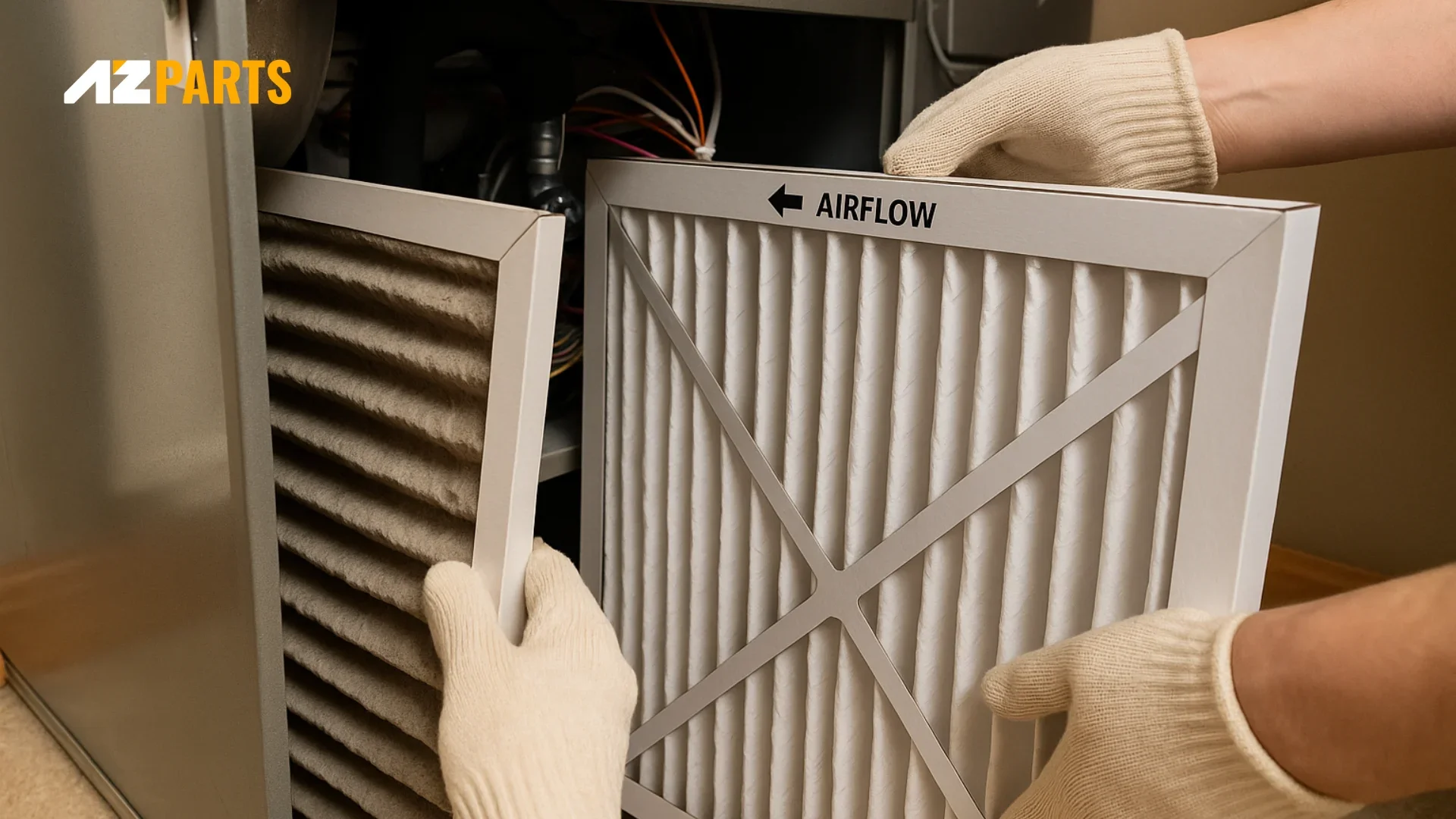
Replace HVAC air filter to improve airflow (Source: AZParts)
How to do it:
Locate the air filter slot on your indoor furnace or air handler, usually where the return duct meets the blower. Slide out the old filter and inspect its condition. Note the filter size (e.g., 16x25x1) and MERV rating (Minimum Efficiency Reporting Value), then insert a new filter in the same direction, ensuring the airflow arrows point toward the blower.
1.4. Check the Insulation on the Pipes
Refrigerant lines, particularly the suction line (the larger of the two), need insulation to prevent energy loss and damage from extreme cold. Deteriorated or missing insulation allows the line to become brittle or crack, leading to efficiency loss and future repair costs, even if the AC isn’t operating.
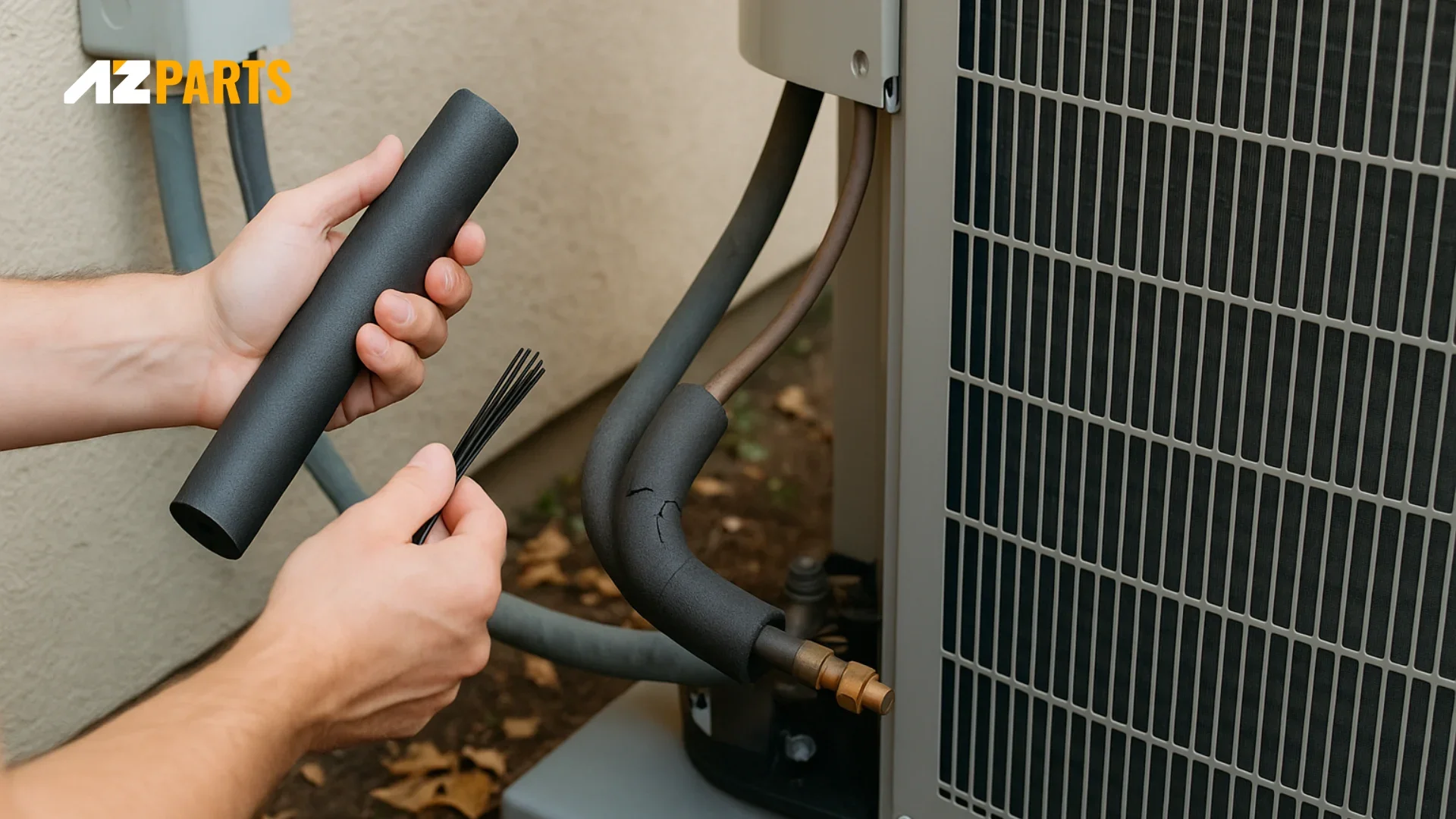
Inspect and replace damaged pipe insulation (Source: AZParts)
How to do it:
Inspect the foam tubing that covers the pipes running from your outdoor unit to the house. Look for cracks, bare spots, or areas that feel soft or crumbling. Buy closed-cell foam insulation sleeves that match your pipe diameter (typically 3/4" or 1"). Cut them to length and wrap tightly around the pipes, securing them with zip ties, foam tape, or weatherproof duct tape.
1.5. Cover Your AC Unit
Modern air conditioners are weather-resistant, but a breathable winter cover offers added defense against snow accumulation, icicles, falling branches, and nesting animals. Without a cover, melting snow and ice can seep into the fan housing, freeze overnight, and cause internal stress or rust.
How to do it:
Choose a ventilated, water-resistant AC cover designed for your model or size. Avoid plastic tarps, which trap condensation and can promote rust. Secure the cover snugly over the top and sides of the unit, ensuring there is airflow at the base. For added protection, place a piece of plywood or a weighted cover top over the fan grille to shield it from snow piles and falling ice.
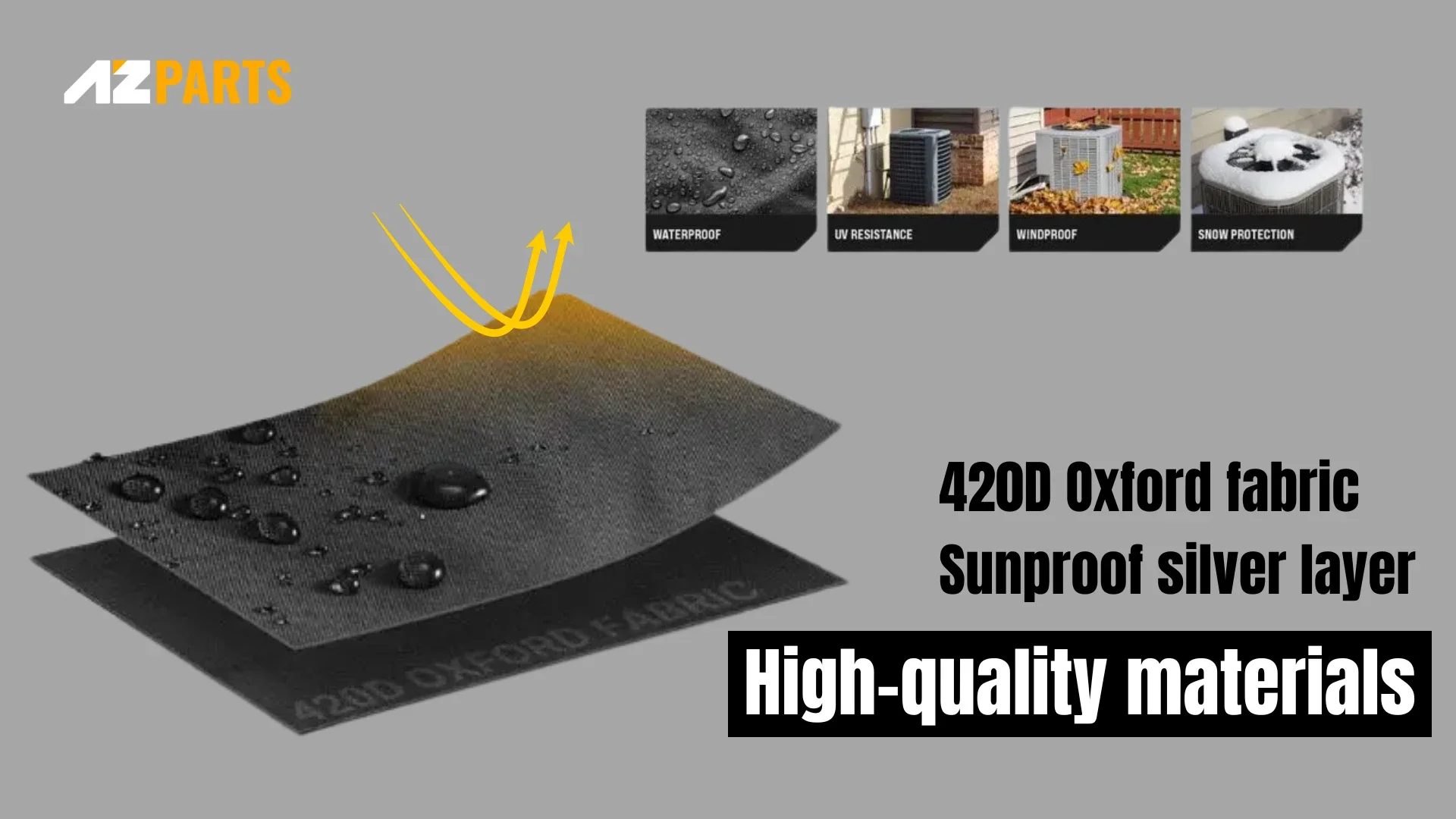
Waterproof materials of AZParts’ AC covers (Source: AZParts)
If you are looking for a reliable, well-fitted cover, AZParts offer a range of breathable and weather-resistant air conditioner covers designed to protect your unit through harshest winters.
- 30"x30"x32" Central Air Conditioner Covers
- 36"x36"x39" Black Central Air Conditioner Covers
- 24"x24"x30" Central Air Conditioner Covers (Black)
- 2 in 1 Central Air Conditioner Cover for Outside Units 32"x32"x36"
- 21" x 15" x 3.5" White Window Air Conditioner Cover Indoor
1.6. Seal Air Leaks
Though this step targets your home more than your AC unit, it’s vital for overall energy efficiency. Air leaks let warm air escape and allow cold drafts to enter, increasing heating demand and costs. In extreme cases, cold air infiltration near ductwork can cause condensation and reduce HVAC efficiency.
How to do it:
On a breezy day, you can run your hand along windows, doors, attic hatches, and wall outlets to feel for drafts. You use silicone or latex caulk to fill small gaps and cracks, and apply weatherstripping tape around movable parts of doors and windows. For electrical outlets on exterior walls, install foam gaskets under the faceplates and consider using outlet safety plugs.
2. Schedule Professional Regular Maintenance
Even after taking the above steps, nothing compares to the trained eye of an HVAC professional. Scheduling regular seasonal maintenance ensures that your system remains in peak condition and ready for both winter and the next cooling season. A technician can:
- Inspect internal components
- Tighten electrical connections
- Test refrigerant levels
- Identify worn or failing parts before they break
AZParts recommends routine maintenance at least once a year. If any components need replacement, AZParts will be your trusted source for reliable, compatible AC parts that help your system last longer.
Explore more air conditioner maintenance and repair tips here:
- Air conditioner capacitor symptoms
- How to maintain air conditioner
- How to clean air conditioner filter
Contact Info
Address: 8 The Green, Ste A, Dover, Delaware 19901-3618, United States
Email: support@azparts.com
Air conditioner
Further Reading
Further Reading




